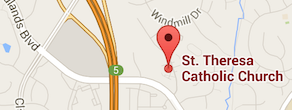What is the history of why we are called ROMAN Catholics?
A parishioner posed the question, “What is the history (Cliff notes version) of why we are called ROMAN Catholics?”
Excuse any lack of precision in language I use, as we’re diving into some Canon Law terminology, but here’s the short answer:
When we say Catholic Church, most in the west think of the Roman Catholic Church, but there are many Eastern Catholic Churches in communion with the Roman Catholic Church and therefore the Pope.
The term “Church” refers to an assembly of the faithful hierarchically ordered and “Catholic” means universal – thus, Catholic Church refers to all those throughout the world who profess the same creed, sacraments, and hierarchy as defined by the magisterium. As we see in Acts of the Apostles, the Apostles moved about the world preaching the Gospel. In their travels, they formed particular Churches – referring to a territory. Of the many particular Churches that were formed by the apostles on their missionary trips, five became the predominant patriarchal sees.
Constantinople, Alexandria, Antioch, and Jerusalem were formed in the Greek East by Andrew, Mark, Peter, and James respectively. Peter also founded the Church of Rome in the Latin west.
As the primacy was placed upon Peter by Christ Jesus, the Church in Rome, led by the Bishop in Rome, has always led the Catholic Church in doctrinal matters. The Pope, Pontifex Maximus, Holy Father, Bishop of Rome…the Bishop of Rome goes by many titles, as the primacy is his. He is at the top of the hierarchy, the supreme legislator, for the Catholic Church.
Since you were baptized into the rites, traditions, and customs of the Roman Catholic Church, that is the Latin Rite – you refer to yourself as Roman Catholic. You fall under the jurisdiction of the Bishop of Rome, whose territorial dioceses extend around the world. Whereas, for example, if you were born in Lebanon, you may have been baptized into the Maronite Rite of the Catholic Church – you profess the same creed, hierarchy, and sacraments as the Roman Catholics, but your traditions, customs, and liturgical practice will differ. You would fall under the jurisdiction of the patriarch of the Maronite rite and the Code of Canons of the Eastern Church (CCEO).
Saint Ambrose, speaking on the differing liturgical practices of the Catholic Church throughout the world, coined the phrase that was later rendered into, “When in Rome, do as the Romans do.” While less eloquent, today it may be better to follow, “When a Roman Catholic, follow the Code of Canon Law.”
That’s the abbreviated version of why we’re “Roman” Catholic.
In Christ,
Fr. Jim
